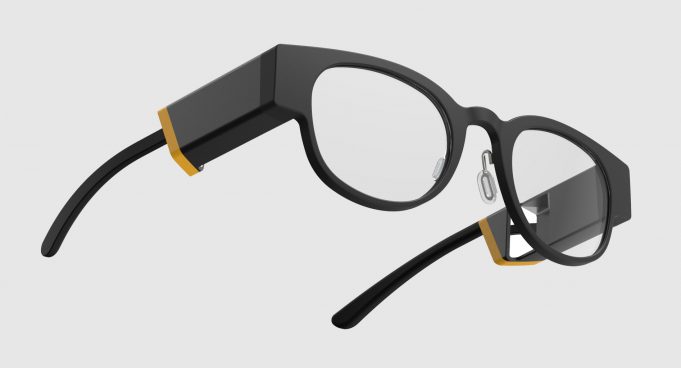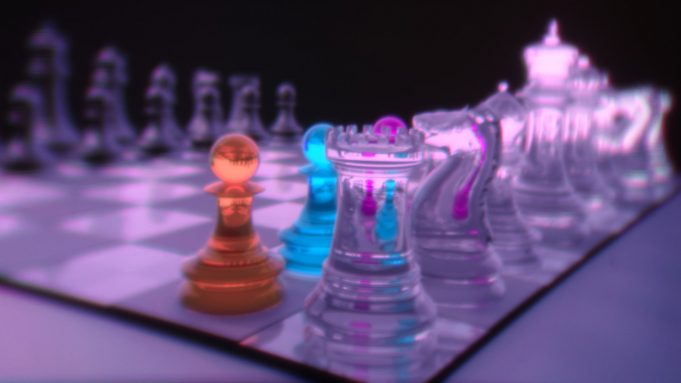Swiss Startup CREAL Raises $7.2 Million For Promising AR Light Field Display
Lausanne-based startup CREAL has raised more than $7.2 million (CHF 6.5 million) in a Series A+ investment round with which to extend its capabilities for its promising light-field display technology.
The startup is planning to bring its light-field display technology into a complete technology package for use in the next-generation Virtual Reality headsets and eventually, Augmented Reality (AR) glasses. Its display technology is currently in a hardware-development-kit stage. The new funding will go into hiring new talent and miniaturizing its light-field tech.

According to CREAL, the Series A+ funding round was closed in mid-November and was led by Swisscom Ventures. Also participating in the funding round were the existing ventures such as DAA Capital Partners, Investiere and Ariel Luedi. The new funding brings the company’s total funding to $15.5 million and comes comes after a number of previous grants.
CREAL will infuse the fresh capital into new staff. The startup recruited specialists from Magic Leap who had previously worked on Intel’s Vaunt data glasses. The know-how brought forth by these specialists should definitely accelerate CREAL’s development roadmap. According to the company CEO Tomas Sluka, a fully functional AR glasses prototype should be ready within two years.
The biggest obstacle with most of today’s Augmented Reality hardware is that they leverage two flat-screen images that generate a stereoscopic illusion of three-dimensional imagery while at the same time ignoring the intrinsic needs for the human eye to focus on the correct distance. This conflict is one of the reasons why users experience an unhealthy and unpleasant eye-strain as well as visual conflicts in augmented reality (AR).
CREAL wants to solve this problem in AR/XR displays by enabling variable focus levels. Naturally, when the human eye focuses on an object which is in close proximity, the background of the object becomes blurred and vice versa. However, this does not happen in XR displays as these devices have a fixed focal plane: both the digital worlds and the AR objects will appear equally sharp regardless of what you are focusing on. This causes a so-called vergence-accommodation conflict which can be followed by eye pain, discomfort and headache.
CREAL’s light field display simulates the variable focus levels thereby enabling the user to have a pleasant and natural viewing experience with Augmented Reality glasses. CREAL says it has found a very efficient and reliable solution to this problem which delivers excellent image quality without the need for eye-tracking.

CREAL has been miniaturizing its novel light-field display with the aim of fitting the technology into Augmented Reality glasses. Light-field displays are a considerable improvement over the displays used in Virtual Reality and Augmented Reality headsets today as they generate images which provide a more accurate representation of how we perceive the real world. Light-field displays support vergence and accommodation which are the two focus mechanisms used by the human visual system. According to CREAL and others involved in the development of light-field displays, these kinds of displays offer users more comfortable and more realistic visuals for both VR and AR headsets.
However, it won’t be easy. Facebook’s research in this technology demonstrates how difficult such a project can be. It took Facebook’s highly specialized team of researchers over five years to develop virtual reality headsets with variable focus.
With the fresh infusion of capital from the latest funding round as well as new skilled staff, this technology could soon be ready for the marketplace.
CREAL occasionally sells its current prototype, still clunky tech glasses, to select companies. According to the company, its current customers includes companies doing research and development which can afford its technology for their application scenarios and products.
In spite of the progress, Sluka believes that the mass market for AR glasses with CREAL technology is still three to four years away.
However, CREAL is not planning to manufacture or market the product by itself. Instead, the startup is positioning itself to sell its know-how and blueprints to manufacturers. The company plans to work with its partners and license its technology to be used in their headsets. CREAL is planning to develop a complete technology package to be used in the next-generation Augmented Reality (AR). This will likely be in the form of a reference design for commercialization.
According to Sluka, the first glasses using the CREAL technology should appear around 2023 and these will likely be in the form of a smartwatch for the nose or an external screen for the smartphone. Sluka predicts that it will probably be a decade before AR glasses eventually replace smartphones.
https://virtualrealitytimes.com/2020/12/06/swiss-startup-creal-raises-7-2-million-for-promising-ar-light-field-display/https://virtualrealitytimes.com/wp-content/uploads/2020/12/An-accurate-blur-can-be-generated-using-light-fields-600x337.jpghttps://virtualrealitytimes.com/wp-content/uploads/2020/12/An-accurate-blur-can-be-generated-using-light-fields-150x90.jpgBusinessStartupsLausanne-based startup CREAL has raised more than $7.2 million (CHF 6.5 million) in a Series A+ investment round with which to extend its capabilities for its promising light-field display technology. The startup is planning to bring its light-field display technology into a complete technology package for use in the next-generation...Sam OchanjiSam Ochanji[email protected]EditorVirtual Reality Times - Metaverse & VR
